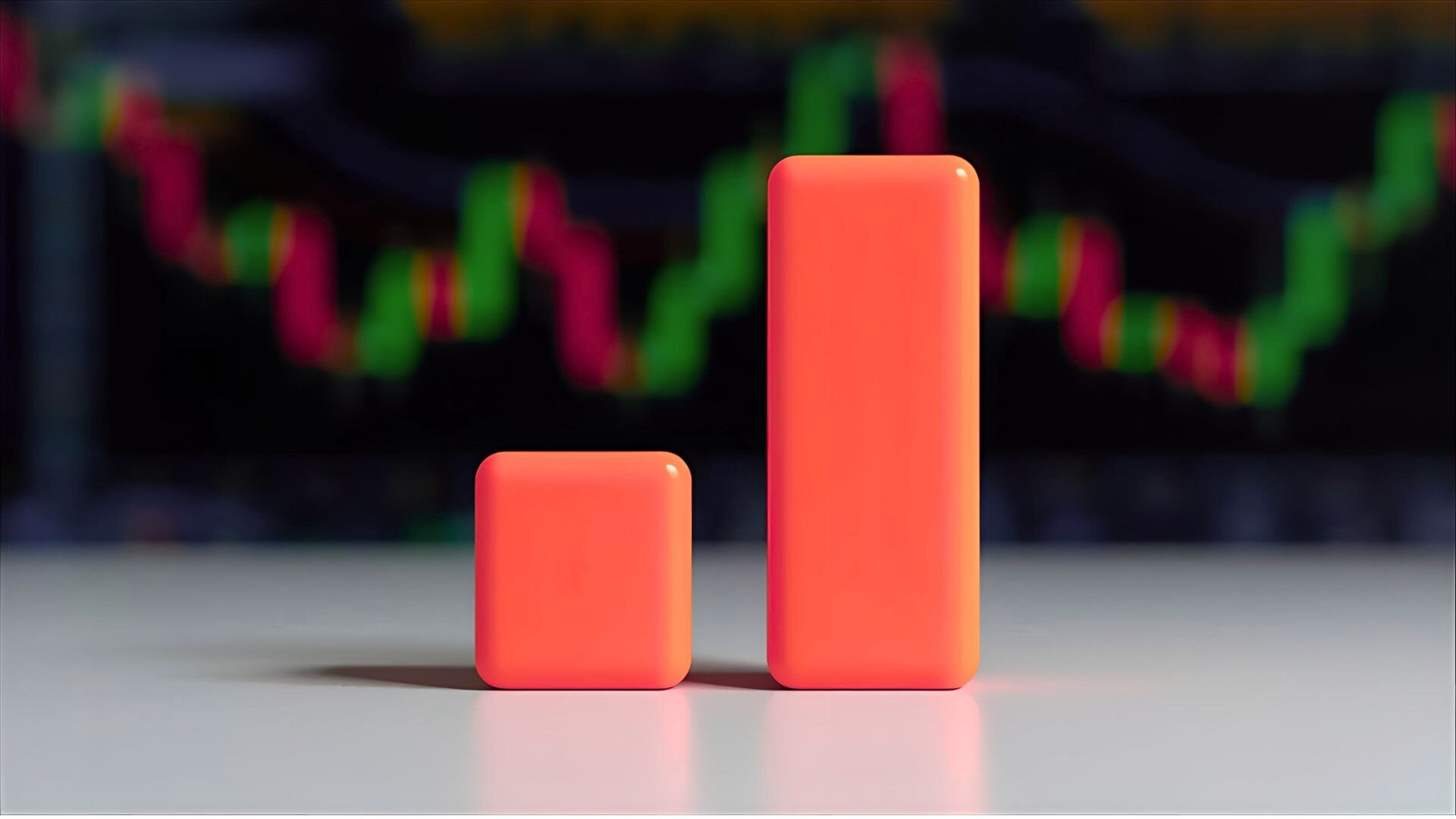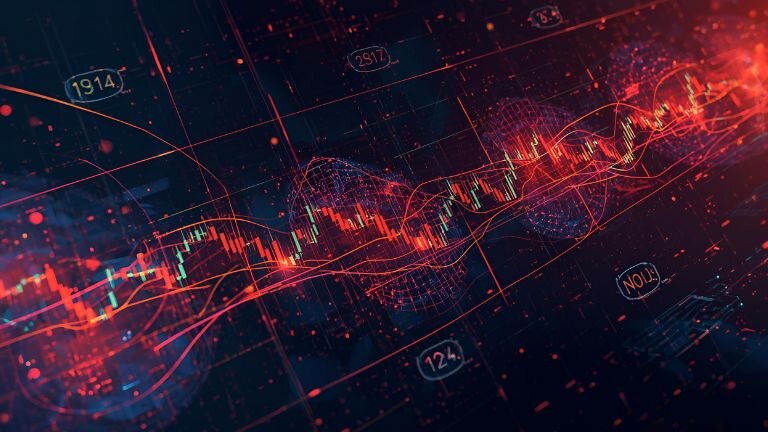
What is margin?
Learn what margin is and how it impacts your trading.
* Trading is risky. Your capital is at risk.
Key takeaways
Margin is a deposit required by brokers that allows trading with leverage.
Free margin is the available funds for opening new trades or absorbing losses. It’s calculated as Equity minus Margin.
Margin level is the ratio of Equity to used Margin. If it drops below a set level, traders receive a Margin Call.
If you’ve ever wondered how forex traders manage to control large positions with relatively small deposits, the answer lies in margin.
In this short guide, you’ll learn what margin is, how it works, and why understanding concepts like free margin, margin level, and margin calls is essential for protecting your account and trading confidently.
What is margin in forex trading?
Margin is the amount of funds a broker requires from a trader to maintain an open trade.
It’s like a "good faith deposit" - allowing traders to open larger positions with a smaller initial deposit. Another way of describing margin is the amount you need to have in your account in order to keep a position open.
Margin is represented as a percentage and is directly connected to the leverage you are trading with.
For example, if a trader was to deposit $20,000 in an account with 1:25 leverage, the margin set by the broker would be 4%.
This means that if the trader were to buy 2 lots of EURUSD at 1.2000, they would need $9,600 (4% of $240,000 (200,000 x 1.2000)) in their account to keep their position open.
What is free margin?
Free margin is the amount of money in your trading account that is available for opening new trades or absorbing potential losses on your existing trades. It’s essentially your "spending power" in the forex market.
Essentially, you can look at the fund in your account in three ways:
Balance: The total amount of money in your account.
Equity: Your total account balance plus/minus the profit or loss of your open trades.
Margin: The portion of your funds being used as collateral for open trades.
Free Margin is calculated as:
Free Margin = Equity - Margin
For example, let's say you deposit $10,000 into your trading account.
You open a trade with $1,000 of Margin. The value of your trade goes up by $50, making your Equity $10,050 (your total balance, plus $50 profit).
In this case, you have $9,050 free magin.
$10,050 (Equity) - $1,000 (Margin = $9,050 (Free margin)
Why is this important?
Free margin is critical because it determines whether you can open new trades.
If your free margin drops too low (due to losses), you risk a margin call or even having your positions automatically closed (stop-out) to prevent your account from going negative.
What is margin level?
Margin level is the ratio of your Equity to the Margin of your open positions, indicated as a percentage. Put simply, margin level indicates how “healthy” your trading account is.
As a formula, margin level looks like this:
(Equity/Used Margin) x 100
Let’s say a trader has an equity of $5,000 and has used up $1,000 of margin. His margin level, in this case, would be ($5,000/$1,000) x 100 = 500%. This is considered to be a very healthy account!
A good way of knowing whether your account is healthy or not is by making sure that your margin level is always above 100%.
How does margin level rise or fall?
If your open trades make a profit, your account Equity will rise, meaning your margin level will rise too.
If your open positions don’t work out and you make losses, your Equity will fall - along with the margin level.
If you margin level dips beneath 100%, it’s time to add funds to your account or close some positions so that all your positions are supported.
If it gets seriously low, you’ll receive a Margin Call.

What is margin call?
A Margin Call is a notification which lets you know that you need to deposit more money in your trading account, or close losing positions,in order to free up more margin.
It’s denoted as a fixed percentage which is determined by your broker and can be seen in the Account Specifications of your trading account.
When the market moves against your open positions, your margin level falls. Once the margin falls to a specific level (the 'Margin Call percentage'), you will get a Margin Call warning.
Put in another way, Margin Calls warn traders that the Stop Out level is approaching.
For example, if a trader with a Margin Call set at 40% has $5000 as a balance but has incurred $3,800 of losses, and has used up $1,000 of Margin, their Margin Level would be: ($5,000 - $3,800) / 1000 X 100 = 120%.
If his Margin Level decreased by another 80%, they would reach 40% and receive a Margin Call.
How can I avoid getting a margin call?
Here are a few tips to keep your forex trading account healthy:
- Keep your trading leverage to a minimum - we recommend 10:1 leverage or less
- Manage your risk carefully by setting Stop losses on your forex trades
- Keep a healthy amount of Free Margin on the account - use no more than 1% of your Account Equity for any single trade, and no more than 5% on all trades at any given time
- Trade smaller sizes – think of each trade as one of many you will make
Can I trade forex without margin?
Yes, you can choose to trade forex with only the capital in your trading account and not leverage your trades. Because you’d be controlling less money, both the potential returns and losses would be smaller.
Trading without margin is usually done by:
- Traders with trading account balances of $100,000 or more
- Those who want to gain more experience of markets and strategies without risking their whole deposit
- People who don’t aim to earn a living in forex, and want to keep risk to a minimum
Calculate required margin with our free calculator
Frequently asked questions
Margin is the money you put up in order to trade with leverage, so the two are interlinked.
If, for example, the margin is 10%, the leverage is 10:1. If it’s 20%, the leverage is 5:1.
When markets move against your open positions, your margin level falls. If it ever falls close to a fixed percentage agreed with your broker, you’ll be notified with a margin call.
The exact percentage of your margin call will depend on your broker.
Let's say your margin call is set at 40%, and your balance is $5,000. If you experience a $3,800 loss and have used up $1,000 of margin. Your margin level is now: ($5,000 - $3,800) / 1,000 x 100 = 120%.
If it drops another 80%, you’ll receive a margin call. It’s then time to either deposit more money, or close losing positions to free up more margin.
At FXTM, we believe that a successful trader is an educated trader.
Traders who gain a solid understanding of the markets and create a thoroughly researched trading strategy are likely to be more prepared to take on the live markets.
That’s why it’s important for traders to make the most out of educational resources to help them build their own personalised trading strategy.
It’s particularly important to create a strategy in order to minimise the impact emotions have on important trading decisions.
The bottom line
Understanding margin, free margin, and margin level is essential for successful forex trading. These concepts help traders manage risk, maintain account health, and avoid margin calls.
By using leverage wisely and monitoring margin metrics, traders can protect their capital and make informed decisions in the forex market.